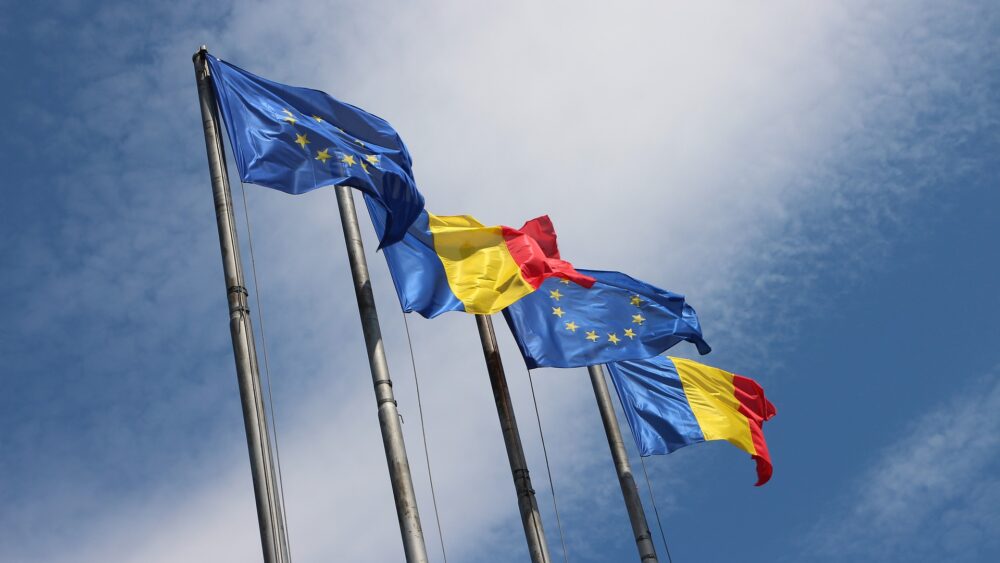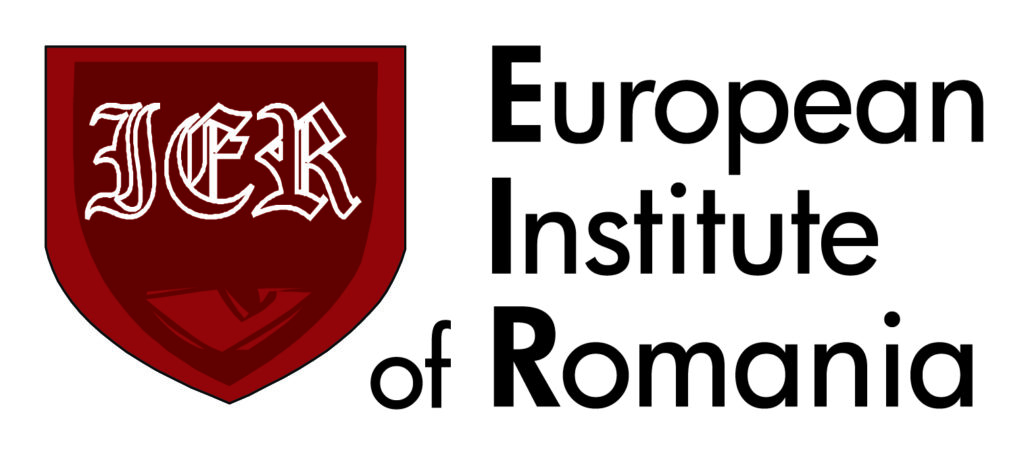Mail points:
– Romania’s “extended national security” doctrine pushes the country to align militarily and economically with the West as its response to the destabilising situation in the Black Sea.
– Romania seeks to become a reliable, but indispensable, ‘strategic anchor’ for the West in a symbiotic relationship based on development and influence.
– With a perceived distortion in the global balance of power, Romania seeks to escalate its friendship with the US separately while rejecting Russian threats and Chinese influences.
Introduction: Becoming an Indispensable Partner
After the 1989 revolution, Romania has embarked on a path to westernise its position in the world. This has evolved in 2004 with its permission to join the North Atlantic Treaty Organisation (NATO) alliance during the Istanbul Summit.[1] Three years later, Romania has joined the European Union (EU) alongside Bulgaria.[2] Both of these memberships offer the best avenue for boosting Romania’s hard and soft power potential in the post-communist era. After joining the two blocs, the benefits became apparent immediately: NATO’s Article 5 offers a considerable force multiplier for Romania’s national security, while the EU’s development funds and single market allowed the country to develop economically greater than it could independently. For Romania, these memberships have resulted in a symbiotic relationship where economic and military modernisation have led the country to have access to valuable EU funds, and the Kogălniceanu Air Base became the host of rotational US forces in the country. The overarching theme of Romania’s national security pattern is tried and tested in its perception: siding with the West offers fundamental benefits across the board for the country, while equally, the country wishes to solidify its position as a necessary “strategic anchor” for the Alliance and US in southeast Europe.
This pattern has only been reinforced with the annexation of Crimea in 2014, when the Black Sea state envisioned this as a natural threat to its security. Therefore, Romania’s National Defence Strategy (NDS) for 2015-2019 subsequently suggested that an even closer cooperation with NATO and USA, Romania’s key strategic ally, is required to create a form of deterrence against Russia’s aggressions in the Black Sea.[3] It also introduced the concept of “extended national security”, which involves the integration of national security perspectives into non-military issues, such as society, information, energy and many others.[4]
In 2020, the new NDS 2020-2024 document, doubled in size and detail than its predecessor, underlines Romania’s “continuity” in this fashion. The strategy acknowledges that there are emerging new threats that are both militarily and non-militarily related. From technological advancements to armed conflicts, Romania’s strategy offers a more concrete and modern understanding of what can undermine its security. Furthermore, Russia is explicitly mentioned, while “frozen conflicts” in the Western Balkans and also “actors with regional interests” aggravate Romania’s national security prospects. However, it urges similar recommendations with its predecessor, while displaying a somewhat wary perception of the changing international order: that the cooperation with NATO, EU and USA needs to be strengthened, and to consolidate NATO’s frontier to be balanced towards the Black Sea as well;[5] implicitly with Romania being selected as the centrepiece of such an eventual plan. Among other important elements, the strategy emphasises continuously that, to secure the Black Sea region, Romania must escalate its close status to the West by continuing to present itself as a “reliable, predictable and continuous” partner while harnessing its diplomatic leverage to convince them of the importance of creating a deterrent force in the South Eastern flank.[6]
The Black Sea: A Backdoor Into NATO
To address the elephant in the room, the Black Sea region remains an objective of “maximum strategic interest” to Romania, and tackling the region requires a comprehensive approach involving economic, military, energetic, and environmental aspects, as well as ensuring society is resilient enough to bounce back from an eventual crisis.[7] This can be achieved by reinforcing NATO’s borders with the help of the EU and the US, especially on the eastern flank, as an answer to Russia’s militarisation of Crimea, its exercises[8] and hybrid warfare tactics.[9] The strategy also added that Russia’s behaviour in the region is to purposefully destabilise it and that subsequent conflicts and volatile environments in the Western Balkans and the Caucasus contribute to this objective. This is further echoed by Ukrainian experts believing Russia wants the whole of Black Sea and more of Ukraine.[10] The assessment is also echoed by a RAND Workshop in 2019 that states that Russia is interested in keeping Black Sea states in “nonalignment or insecurity” and open to business with Russia.[11]
Romania alone cannot solve this issue; it simply does not have the capacity, technology or resources to do it, nor will it have the naval strength without the help of NATO and its Black Sea neighbours, especially Bulgaria and Turkey combined.[12] While the strategy does push for the maintenance of the 2% GDP expenditure into armed forces, and a fifth of this budget into much-needed modernisation, the overall solution relies more on Romania’s position with its allies instead. By harnessing potentially more resourceful diplomatic channels that Romania has been developing for decades with its more equipped partners, it seeks to wield the Alliance’s military power (and interested or willing neighbours) into establishing a defensive bloc with the express interest of deterring Russia from using the Black Sea as a means to subvert Romania’s and the West’s interests. It seeks to do so not only with NATO and USA as a counter to such hard power threats, but also to synergise with the EU as a means reinforcing soft power factors, such as improving the economy via EU programs or further institutional integration; aside from convincing its neighbours to join in on creating such a defensive bloc and promoting synergy between the two blocs. If Romania’s asserted narrative proves to be successful, then the country should become the first choice for the Alliance to pour resources for stabilising the Black Sea, while the country benefits to the extent where it couldn’t otherwise.
This strategy has already worked to a certain extent. During the Warsaw Summit, Romania saw the acknowledgement by its allies of the need to reinforce the Black Sea front, where NATO committed to a forward operating force in the region,[13] and later in 2016 Romania became a host of the anti-ballistic system sponsored by the US.[14] It also planned to host a naval training installation in cooperation with its US and Bulgarian allies,[15] perhaps as a counter-balance to Russia’s own exercises. However, Romania’s most ambitious plan, that of establishing a permanent NATO fleet in the Black Sea failed, since Bulgaria[16] and Turkey[17] refused to take part in it. In the end, Romania received a multinational brigade and became part of the “Tailored Forward Presence”, a NATO initiative with Bulgaria that does not have a concrete structure yet.[18] Since Romania appears to be subjected to various forms of political or economic discrimination (which is important considering many members are also part of NATO), including an almost hierarchical behaviour best observed in their accession to the Schengen Area[19] and also receiving mixed signals on NATO’s own commitments,[20] Romania’s rhetorical efforts may encounter more resistance than one might expect.
Regardless, the strategy consistently asserts that NATO and EU relations are part of the nation’s vectors to promoting stability and security for the region and itself,[21] therefore highlighting that such narrative surrounding the strategic importance of the Black Sea signals that the strategy believes that the Western allies, with their strengths and flaws, are Romania’s best bet at security for itself and the region, due to their military force and common narratives of pushing for a “rules-based international order”.[22] But the strategy also includes, more so than its predecessor, additional attention on bilateral and non-NATO/EU agreements, such as the Three Seas initiative or, most importantly, its strategic partnership with the United States. The strategy makes an important observation with regards to the behaviour of its allies: Russia’s aggressions expose increasing divergence (or a disunited approach) from NATO members in answering them.[23] In 2014, then-President Traian Basescu previously condemned Romania’s allies for dealing with Russia with “kid gloves”, highlighting their soft response over Ukraine,[24] which only serves to support this observation. Apart from the aforementioned partial successes Romania achieved, the overall rhetoric in the NDS 2020 suggests NATO and the West is still not taking the Black Sea seriously enough.
The United States: The Key Strategic Partner
Therefore, the country also continues to greatly deepen its cooperation with the United States in parallel; such important is this relationship between the two that the strategy itself consistently refers to them separately from the other two blocs altogether, due to the key strategic importance. While nothing surprising in itself, the strategy does assert that Romania must facilitate the increased presence of US forces in its territory, once again as part of its strategy to form a deterrent against Russia’s military threat.[25] It seeks to invest into facilities that will allow cooperation, training, stationing, access and general infrastructure to house these forces, something Romania has already committed towards: the Ministry of National Defence is pushing parliament to begin the investment of over EUR€2.5 billion over 20 years for modernising and expanding the already-hosting Mihail Kogălniceanu Air Base,[26] and another EUR€200 million (and about EUR€110 million from the US separately) for the 71st Air Base at Câmpia Turzii.[27] Romania’s intent to increase US military presence in the border may considerably boost its defensive capabilities and deterrence objectives in the Black Sea, but they also come at the cost of Russia’s condemnation and views as an escalation in the region, despite Romania saying this is because of Russia’s behaviour.[28] Romania already upgrades its air force with F-16 jets, hosts MQ9 Predator drones at Câmpia Turzii and displayed more interest in the F35, as opposed to the Spanish-German-French FCAS “new generation aircraft” or the British-Italian counterpart, the Tempest.[29] This can also be due to the immediate availability of the F35 and Romania’s ongoing push for military modernisation, since these systems are meant to be introduced between 2035 and 2040; perhaps these interests will change when more information on the project is made available. It is also worth noting that Romania has also approved a major infrastructure program supported by USA in connecting the Gdansk Port with Constanța’s with a highway and railway: from the Baltic Sea to the Black Sea, as part of the Three Seas Initiative.[30] This aligns itself with Romania’s NDS in pushing to consolidate the alliance’s security, especially commercially and energetically under this specific framework.
The strategy overall asserts that NATO and EU must synergise on security matters, and this strategic triad of the two blocs and the US are critical to Romania’s security. That much was made clear by Romania’s efforts during its presidency of the European Council in 2019, and by Klaus Iohannis in his first speech in his second term in 2020.[31] But the strategy showcases a contrasting observation: that the international order is now subjected to a form of “diluted multilateralism” where countries will focus more on their own interests and bilateralism instead.[32] This comes in the midst of the COVID-19 pandemic and how the European Union’s members originally looked inward at the start, instead of helping each other out.[33] Trump’s foreign policy only served to reinforce this perspective as well, especially when one takes into account his behaviour towards NATO and UN institutions overall. The contrasting course correction President-elect Biden wishes to push, may contradict this narrative, but considering domestic issues and legacy left behind by President Trump, the impact of his efforts remains to be seen. Nevertheless, the NDS also mentions that the “rise of bilateralism” is coupled with the “return of force policies” and the acting upon geostrategic interests is more frequent than before; marking Romania’s key geographic position as both a blessing and a curse since it is bringing more attention from both friends and foes alike. Knowing Romania is already a ‘target’ for Russia,[34] the state feels even more pressure from the fear of a Russian attack of any sort. The general feeling the NDS grants is that the Alliance will not abandon Romania at all, but its commitment is both insufficient and may even partially ineffective due to lack of prior investment into the flank.
Therefore, if multilateralism is diluted and states further act on geopolitical interests than before, it should come as no surprise if Romania also pushes to befriend the US bilaterally. Aside from the more streamlined relations compared that of a collective alliance, the strategy consistently highlights the special importance this relationship features, going as far as to stating that USA’s position in the world remains consistent for the “foreseeable future” and that it is in Romania’s interest it stays that way.[35] Despite this, the strategy asserts that hegemonic struggles between the superpowers in the European-Asian-Pacific regions are showing, and that the US will have to shift priorities based on how China’s rise plays out.[36] All of this pushes Romania to promote its position to the US for a symbiotic relationship where USA and Romania gain influence in the region and development support respectively. Much to Russia’s dismay, Romania will continue pursuing this strategy routinely. It would even go as far as to immediately offering to house part of the same US forces facing relocation from Germany, as former Defence Secretary Esper mentioned the need to increase the number of rotational forces at the Black Sea.[37]
But this alignment extends further than just militarily. The document exhibits a certain subtlety on this push, stating that there are non-Western powers that seek to contest the “liberal international order”, which presents a major tendency that can change the global balance of power in the next fours years.[38] Since Russia was explicitly named multiple times before in the document, one would imagine that this implicitly refers to China and its aggressive wielding of economic might to gain stronger footing internationally. Even without mention, there are a number of clues in Romania’s actions that indicate this is the case.
The first one is the China-Romania deal signed in 2015 where China would help with the construction of Reactors 3 and 4 at the Cernavodă Nuclear Power Plant.[39] The reactors in question are Canadian-designed CANDU-6 reactors, generating approximately 700MW each.[40] With Cernavodă already having 2 identical generators, it means that this expansion will result in an additional approximate of 1500MW in energy generation; and since a quarter of Romania’s energy generation is nuclear in origin, this investment can go a long way to securing the country’s energy security.[41] Knowing this, after the new NDS was signed into effect, the 5-year old deal between Romania and China got cancelled.[42] After the cancellation, Romania proceeded to make similar agreements with the US[43] and France.[44] A similar project is undergoing in Poland where US committed to its energy independence with an USD$18 billion dollar plan for nuclear energy.[45] While this new agreement allows Romania to consolidate its energy security further with the superpower it shares its “liberal international order” beliefs, Romania also offers an opportunity for the US to expand against China’s aggressive push abroad. Since Romania is willingly orienting towards the US (as opposed to its rivals), this gives more reasons for the superpower to deepen its relationship with it even further and access greater cooperation opportunities as a result.
The securitization of 5G
Another step Romania has taken in aligning with the US while blocking China off is a law that was passed earlier in 2020 that demanded corporations which wished to construct 5G grids prove they have no state-affiliations, originate from a country with a transparent judicial system or have a history of unethical conduct[46]. Huawei, one of China’s biggest technological companies, would not be eligible as a result. Before that, the US and Romania signed a declaration stating that the two countries would work together on the creation of the 5G network in the country, and specifically “avoid the security risks” that arrive with a Chinese infrastructure.[47]
The national security strategy, in parallel, asserts that technology is rapidly becoming weaponised and results in a “seizure of activities previously being perceived as exclusively physical” now being digitally possible; furthering that civilian technologies present a dual-use feature and that they also amplify hybrid warfare capabilities; allowing states to use civilian technologies to damaging effects and amplify their own capabilities.[48] Such vague ‘seizure’ can imply anything, but cyberespionage and the capacity to damage a country’s infrastructure through cyberattacks without deploying forces are a few examples that come to mind. The document also states that the lack of transparency in the development of technologies results in an uncertainty that can affect national security, and also explicitly underlines 5G as one of the main concerns in today’s national security domains.[49] Aside from the historical alignment, the combination of Romania’s perspective on opaque technological developments, its understanding that civil technologies can be used for military purposes more so than before, and the reality that 5G is an avenue for affecting national security in an increasingly aggressive world, pushes the country to reinforce its relationships with the West even further and in-line with its desire to be seen as a “strategic anchor” for answering the future threats. Romania is already one of the testing grounds for 5G networks for the French company Orange, initially activating its service in 2019 and expanding across the country since, already putting the Huawei at a disadvantage before the law was even conceived.[50]
Conclusion
In conclusion, Romania’s further alignment with the West is nothing to be surprised of: it is a pattern that has always been present, only to be greatly intensified since the annexation of Crimea. However, the new strategy offers far greater detail in how Romania goes about to securing itself in the Black Sea region, as well as offering clearer, if not subtly prudent, perspectives on the balance of power struggles around the world. Romania continues to play a balancing act where it remains a staunch member of NATO and EU, so much so as to support a synergy between the two, while also befriending the US further, treating the multilateral and bilateral talks as separate entities at times, while it refuses to yield to Russia’s threats and also rejecting Chinese influences on its economy in favour of USA’s. This strategy has the potential, if backed with concrete action and a successfully influential narrative, to turn Romania into the go-to “transparent, reliable and predictable” symbiotic partner it wants to be in the West. One final comment one can make is the assumption that Romania perceives that, in the long-term, there will be a new international struggle between superpowers overall, and that Romania is taking the USA’s side early on before a major escalation ensues, but that is just a hypothesis and not an assertion of the NDS itself.
Recommendations
Romania’s national security concerns with Russia must be paid attention to. Since Russia would exploit any lack of attention or exposure over its operations in the Black Sea, NATO must cooperate with Romania further in reinforcing the southeastern flank, including the establishment of further NATO patrols, better rapid response logistics, and supporting modernisation efforts.
Russia will perceive the increased arrival of NATO or US forces in Romania as an escalation and will answer by intensifying its efforts while spinning a defensive narrative to justify its actions. As reinforcing the Southeastern flank should be unavoidable, a supporting narrative where Russia’s destabilising actions are called out and which frames the West’s own as a reactive rather than offensive can help combat the disinformation capabilities Russia uses for sowing instability.
The Montreux Convention regulates the access of ships within the Black Sea and the Mediterranean. Since Russia pushes the limit of this agreement,[51] an international committee should be established to strictly oversee the activity in the Straits. This could limit Russia’s operability in the region and allow the West further backing to act in the Black Sea region and sanction Russia’s economy in accordance to international law.
Romania’s “extended national security perspective” allows the opportunity for the EU to invest in harnessing the country’s resources, especially in the Black Sea, to support increased energy security, thus subverting further Russia’s regional influences and boosting the West’s.
Bibliography
BBC, (2016), “US activates $800m missile shield base in Romania”, Available at: https://www.bbc.com/news/world-europe-36272686
Dan Bilefsky, (2007) “Romania and Bulgaria Join EU – Europe – International Herald Tribune”, Accessed at: https://www.nytimes.com/2007/01/01/world/europe/01iht-EU.4070609.html
Digi24, (2020) “Proiect uriaș, anunțat de americani: O autostradă și o cale ferată care să lege Constanța de portul Gdansk din Polonia”, [Romanian, Online], Available at: https://www.digi24.ro/stiri/economie/transporturi/proiect-urias-in-pregatire-cu-sua-o-autostrada-si-o-cale-ferata-care-sa-lege-constanta-de-portul-gdansk-din-polonia-1382120
Elisabeth B., (2020) ”Europe’s Coronavirus Response: Selfish Member States and Active Institutions”, RUSI, Available At: https://rusi.org/commentary/europe-coronavirus-response-selfish-member-states-and-active-institutions
Elizabeth K., Slav O., (2016) “ Bulgaria Won’t Be Part of NATO Fleet in Black Sea, Premier Says”, Available at: https://www.bloomberg.com/news/articles/2016-06-16/bulgaria-won-t-be-part-of-nato-fleet-in-black-sea-premier-says
Financial Intelligence, (2020) ”MApN solicită aprobarea Parlamentului pentru iniţierea procedurilor de atribuire a contractelor de lucrări la Baza Kogălniceanu – investiţie de 12 miliarde de lei, bani de la buget, pentru următorii 20 de ani”, Available at: https://financialintelligence.ro/mapn-solicita-aprobarea-parlamentului-pentru-initierea-procedurilor-de-atribuire-a-contractelor-de-lucrari-la-baza-kogalniceanu-investitie-de-12-miliarde-de-lei-bani-de-la-buget-pentru-urmatorii-2/
Gardner H., (2016) “The Russian annexation of Crimea: regional and global ramifications,” European Politics and Society, 17:4, 490-505, Available at: https://www.tandfonline.com/doi/pdf/10.1080/23745118.2016.1154190?needAccess=true&instName=University+of+Warwick
George V., (2020) “Romania’s New National Defense Strategy Irks Kremlin (Part One)”, Eurasia Daily Monitor, 17:87, Available at: https://jamestown.org/program/romanias-new-national-defense-strategy-irks-kremlin-part-one/
International Energy Agency, (2020) “Romania”, Available at: https://www.iea.org/countries/romania
Institute of Electrical and Electronics Engineers, “CANDU 6 – Sharing The Success”, Available at: https://www.ieee.ca/millennium/candu/candu_sharing.html
Iulia-Sabina J., (2018), “Dealing with the Russian Lake Next Door: Romania And Black Sea Security”, Available at: https://warontherocks.com/2018/08/dealing-with-the-russian-lake-next-door-romania-and-black-sea-security/
Madalin N., (2020) ”Romania Cancels Deal With China to Build Nuclear Reactors”, Available at: https://balkaninsight.com/2020/05/27/romania-cancels-deal-with-china-to-build-nuclear-reactors/
Marcel G. B., (2020) ”Romania Ready To “Welcome” Us Troops Removed From Germany”, Available at: https://balkaninsight.com/2020/07/30/romania-ready-to-welcome-us-troops-removed-from-germany/
Marcel G. B., (2020) “Romanian Conditions for 5G Race Would Rule out Huawei”, Available at: https://balkaninsight.com/2020/08/05/romanian-conditions-for-5g-race-would-rule-out-huawei/
Michael, P., (2019) “The Naval Power Shift in The Black Sea”, Available at: https://warontherocks.com/2019/01/the-naval-power-shift-in-the-black-sea/
Ministry of Foreign Affairs, (2010) “A chronology of NATO-Romania Relationship”, Accessed at: https://www.mae.ro/en/node/2131?page=4
Nordic Monitor, (2020), “Turkey opposed permanent NATO presence in the Black Sea, rebuffed Romanian proposal” Available at: https://www.nordicmonitor.com/2020/01/turkey-opposed-permanent-nato-presence-in-the-black-sea-rebuffed-romania/
North Atlantic Treaty Organisation, (2016) “Warsaw Summit Key Decisions”, Available at: https://www.nato.int/nato_static_fl2014/assets/pdf/pdf_2017_02/20170206_1702-factsheet-warsaw-summit-key-en.pdf
Radu M., (2014) ”Romania’s Basescu slams EU for soft Putin stance”, Available at: https://www.reuters.com/article/us-ukraine-crisis-romania/romanias-basescu-slams-eu-for-soft-putin-stance-idUSKBN0FQ1W320140721
Romanian Insider, (2018) ”Putin: Russia will target countries hosting US intermediate-range missiles”, Available at: https://www.romania-insider.com/putin-russia-target-countries-hosting-us-intermediate-range-missiles
Sharyl C., (2015) “NATO–Russia security challenges in the aftermath of Ukraine conflict: managing Black Sea security and beyond”, Southeast Europe and Black Sea Studies, 15:2, Available at: https://doi.org/10.1080/14683857.2015.1060017
Siemon T. W., Alexandra K., (2018) “Romania and Black Sea Security”, SIPRI Background Paper, Available at: https://www.sipri.org/sites/default/files/2019-04/bp_1812_black_sea_romania.pdf, p.8-9
Stephen E., (2019), “Romania Pushes to Be Treated as a Fully Fledged E.U. Member”, Available at: https://www.nytimes.com/2019/09/21/world/europe/romania-eu-schengen-zone.html
Stephen J. F., Irina A.C. (2019) “Russia, NATO and the Black Sea Security Strategy: Regional Perspectives from a 2019 Workshop”, Available at: https://www.rand.org/pubs/conf_proceedings/CF405.html
Sutton H. I., (2020) “Russian Submarine Transits Bosporus In Move That Raises Questions Under International Treaty”, Available at: https://www.forbes.com/sites/hisutton/2020/06/23/image-shows-russian-submarine-appearing-to-break-international-treaty/?sh=2ef5915657b8
Makszimov V., (2020) “Crimean experts warn Russia has appetite for Black Sea, more Ukrainian land”, Available at: https://www.euractiv.com/section/europe-s-east/news/crimean-experts-warn-russia-has-appetite-for-black-sea-more-ukrainian-land/
Presidential Administration, “The National Defence Strategy For The 2015-2019 Period”, [Romanian], Available at: https://www.eda.europa.eu/docs/default-source/Defence-Procurement-Gateway/national-defense-strategy-2015—2019.pdf
Presidential Administration, “The National Defence Strategy For The 2020-2024 Period”, [Romanian], Available at: https://www.presidency.ro/files/userfiles/Documente/Strategia_Nationala_de_Aparare_a_Tarii_2020_2024.pdf
Tania L., (2020) ”Armament And Transatlantic Relationships”, Armament Industry European Research Group, Available At: https://www.iris-france.org/wp-content/uploads/2020/05/ARES-51.pdf
Timothy G., “U.S. sees $18 billion from purchases in nuclear power agreement with Poland”, Available at: https://www.reuters.com/article/us-usa-nuclearpower-poland-idUSKBN274239
Victor C., “Armata investește 200 de milioane de euro în Baza Aeriană de la Câmpia Turzii pentru operarea avioanelor F-16 ale Forțelor Aeriene”, Available At: https://www.hotnews.ro/stiri-defense-23864129-baza-aeriana-71-campia-turzii-modernizare-extindere-16.htm
World Nuclear News, (2020) “France and Romania plan joint work on Cernavoda project”, Available at: https://www.world-nuclear-news.org/Articles/France-and-Romania-plan-joint-work-on-Cernavoda-pr
World Nuclear News, (2015) ”Romania and China seal Cernavoda Agreement”, Available at: https://www.world-nuclear-news.org/NN-Romania-and-China-seal-Cernavoda-agreement-10111501.html
World Nuclear News, (2020) ”Romania and USA agree to cooperate in nuclear projects”, Available at: https://world-nuclear-news.org/Articles/Romania-and-USA-agree-to-cooperate-in-nuclear-proj
White House, “Joint Statement from President of the United States Donald J. Trump and President of Romania Klaus Iohannis”, Available at: https://www.whitehouse.gov/briefings-statements/joint-statement-president-united-states-donald-j-trump-president-romania-klaus-iohannis/
Yanitsa B., (2019) “Romania leads Orange 5G charge”, Available at: https://www.mobileworldlive.com/featured-content/home-banner/romania-leads-orange-5g-charge
[1] Ministry of Foreign Affairs, (2010) “A chronology of NATO-Romania Relationship”, Accessed at: https://www.mae.ro/en/node/2131?page=4
[2] Bilefsky D., (2007) “Romania and Bulgaria Join EU – Europe – International Herald Tribune”, Accessed at: https://www.nytimes.com/2007/01/01/world/europe/01iht-EU.4070609.html
[3] The Presidential Administration, “The National Defence Strategy For The 2015-2019 Period”, [Romanian], Available at: https://www.eda.europa.eu/docs/default-source/Defence-Procurement-Gateway/national-defense-strategy-2015—2019.pdf
[4] Presidential Administration, “NDS 2015-2019”, Online, p.5
[5] The Presidential Administration, “The National Defence Strategy For The 2020-2024 Period”, [Romanian], Available at: https://www.presidency.ro/files/userfiles/Documente/Strategia_Nationala_de_Aparare_a_Tarii_2020_2024.pdf, p17
[6] Presidential Administration, “NDS 2020-2024”, Online, p.6
[7] Presidential Administration, “NDS 2020-2024”, Online, p21
[8] Michael P., (2019) “The Naval Power Shift in The Black Sea”, Available at: https://warontherocks.com/2019/01/the-naval-power-shift-in-the-black-sea/
[9] Presidential Administration, “NDS 2020-2024”, Online, p.22
[10] Makszimov V., (2020) “Crimean experts warn Russia has appetite for Black Sea, more Ukrainian land”, Available at: https://www.euractiv.com/section/europe-s-east/news/crimean-experts-warn-russia-has-appetite-for-black-sea-more-ukrainian-land/
[11] Stephen J. F., Irina A.C. (2019) “Russia, NATO and the Black Sea Security Strategy: Regional Perspectives from a 2019 Workshop”, Available at: https://www.rand.org/pubs/conf_proceedings/CF405.html
[12] Sharyl C., (2015) “NATO–Russia security challenges in the aftermath of Ukraine conflict: managing Black Sea security and beyond”, Southeast Europe and Black Sea Studies, 15:2, Available at: https://doi.org/10.1080/14683857.2015.1060017
[13] North Atlantic Treaty Organisation, (2016) “Warsaw Summit Key Decisions”, Available at: https://www.nato.int/nato_static_fl2014/assets/pdf/pdf_2017_02/20170206_1702-factsheet-warsaw-summit-key-en.pdf
[14] BBC, (2016), “US activates $800m missile shield base in Romania”, Available at: https://www.bbc.com/news/world-europe-36272686
[15] Gardner H., (2016) “The Russian annexation of Crimea: regional and global ramifications,” European Politics and Society, 17:4, 490-505, Available at: https://www.tandfonline.com/doi/pdf/10.1080/23745118.2016.1154190?needAccess=true&instName=University+of+Warwick
[16] Elizabeth K., Slav O., (2016) “ Bulgaria Won’t Be Part of NATO Fleet in Black Sea, Premier Says”, Available at: https://www.bloomberg.com/news/articles/2016-06-16/bulgaria-won-t-be-part-of-nato-fleet-in-black-sea-premier-says
[17] Nordic Monitor, (2020), “Turkey opposed permanent NATO presence in the Black Sea, rebuffed Romanian proposal” Available at: https://www.nordicmonitor.com/2020/01/turkey-opposed-permanent-nato-presence-in-the-black-sea-rebuffed-romania/
[18] Siemon T. W., Alexandra K., (2018) “Romania and Black Sea Security”, SIPRI Background Paper, Available at: https://www.sipri.org/sites/default/files/2019-04/bp_1812_black_sea_romania.pdf, p.8-9
[19] Stephen E., (2019), “Romania Pushes to Be Treated as a Fully Fledged E.U. Member”, Available at: https://www.nytimes.com/2019/09/21/world/europe/romania-eu-schengen-zone.html
[20] Iulia-Sabina J., (2018), “Dealing with the Russian Lake Next Door: Romania And Black Sea Security”, Available at: https://warontherocks.com/2018/08/dealing-with-the-russian-lake-next-door-romania-and-black-sea-security/
[21] Presidential Administration, “NDS 2020-2024”, Online, p.21
[22] ibid, p.21 and p30
[23] ibid., p.18
[24] Radu M., (2014) ”Romania’s Basescu slams EU for soft Putin stance”, Available at: https://www.reuters.com/article/us-ukraine-crisis-romania/romanias-basescu-slams-eu-for-soft-putin-stance-idUSKBN0FQ1W320140721
[25] Presidential Administration, “NDS 2020-2024”, Online, p.32
[26] Financial Intelligence, (2020) ”MApN solicită aprobarea Parlamentului pentru iniţierea procedurilor de atribuire a contractelor de lucrări la Baza Kogălniceanu – investiţie de 12 miliarde de lei, bani de la buget, pentru următorii 20 de ani”, Available at: https://financialintelligence.ro/mapn-solicita-aprobarea-parlamentului-pentru-initierea-procedurilor-de-atribuire-a-contractelor-de-lucrari-la-baza-kogalniceanu-investitie-de-12-miliarde-de-lei-bani-de-la-buget-pentru-urmatorii-2/
[27] Victor C., “Armata investește 200 de milioane de euro în Baza Aeriană de la Câmpia Turzii pentru operarea avioanelor F-16 ale Forțelor Aeriene”, Available At: https://www.hotnews.ro/stiri-defense-23864129-baza-aeriana-71-campia-turzii-modernizare-extindere-16.htm
[28] George V., (2020) “Romania’s New National Defense Strategy Irks Kremlin (Part One)”, Eurasia Daily Monitor, 17:87, Available at: https://jamestown.org/program/romanias-new-national-defense-strategy-irks-kremlin-part-one/
[29] Tania L., (2020) ”The Romanian Perspective”, Armament Industry European Research Group, Available At: https://www.iris-france.org/wp-content/uploads/2020/05/ARES-51.pdf
[30] Digi24, (2020) “Proiect uriaș, anunțat de americani: O autostradă și o cale ferată care să lege Constanța de portul Gdansk din Polonia”, [Romanian, Online], Available at: https://www.digi24.ro/stiri/economie/transporturi/proiect-urias-in-pregatire-cu-sua-o-autostrada-si-o-cale-ferata-care-sa-lege-constanta-de-portul-gdansk-din-polonia-1382120
[31] Tania, The Romanian Perspective, Online, p.6
[32] Presidential Administration, “NDS 2020-2024”, Online, p.19
[33] Elisabeth B., (2020) ”Europe’s Coronavirus Response: Selfish Member States and Active Institutions”, RUSI, Available At: https://rusi.org/commentary/europe-coronavirus-response-selfish-member-states-and-active-institutions
[34] Romanian Insider, (2018) ”Putin: Russia will target countries hosting US intermediate-range missiles”, Available at: https://www.romania-insider.com/putin-russia-target-countries-hosting-us-intermediate-range-missiles
[35] Presidential Administration, “NDS 2020-2024”, Online, p.19
[36] ibid.
[37] Marcel G. B., (2020) ”Romania Ready To “Welcome” Us Troops Removed From Germany”, Available at: https://balkaninsight.com/2020/07/30/romania-ready-to-welcome-us-troops-removed-from-germany/
[38] Presidential Administration, “NDS 2020-2024”, Online, p.18
[39] World Nuclear News, (2015) ”Romania and China seal Cernavoda Agreement”, Available at: https://www.world-nuclear-news.org/NN-Romania-and-China-seal-Cernavoda-agreement-10111501.html
[40] Institute of Electrical and Electronics Engineers, “CANDU 6 – Sharing The Success”, Available at: https://www.ieee.ca/millennium/candu/candu_sharing.html
[41] International Energy Agency, (2020) “Romania”, Available at: https://www.iea.org/countries/romania
[42] Madalin N., (2020) ”Romania Cancels Deal With China to Build Nuclear Reactors”, Available at: https://balkaninsight.com/2020/05/27/romania-cancels-deal-with-china-to-build-nuclear-reactors/
[43] World Nuclear News, (2020) ”Romania and USA agree to cooperate in nuclear projects”, Available at: https://world-nuclear-news.org/Articles/Romania-and-USA-agree-to-cooperate-in-nuclear-proj
[44] World Nuclear News, (2020) “France and Romania plan joint work on Cernavoda project”, Available at: https://www.world-nuclear-news.org/Articles/France-and-Romania-plan-joint-work-on-Cernavoda-pr
[45] Timothy G., “U.S. sees $18 billion from purchases in nuclear power agreement with Poland”, Available at: https://www.reuters.com/article/us-usa-nuclearpower-poland-idUSKBN274239
[46] Marcel G. B., (2020) “Romanian Conditions for 5G Race Would Rule out Huawei”, Available at: https://balkaninsight.com/2020/08/05/romanian-conditions-for-5g-race-would-rule-out-huawei/
[47] White House, “Joint Statement from President of the United States Donald J. Trump and President of Romania Klaus Iohannis”, Available at: https://www.whitehouse.gov/briefings-statements/joint-statement-president-united-states-donald-j-trump-president-romania-klaus-iohannis/
[48] Presidential Administration, “NDS 2020-2024”, Online, p.6
[49] ibid., p.20
[50] Yanitsa B., (2019) “Romania leads Orange 5G charge”, Available at: https://www.mobileworldlive.com/featured-content/home-banner/romania-leads-orange-5g-charge
[51] Sutton H. I., (2020) “Russian Submarine Transits Bosporus In Move That Raises Questions Under International Treaty”, Available at: https://www.forbes.com/sites/hisutton/2020/06/23/image-shows-russian-submarine-appearing-to-break-international-treaty/?sh=2ef5915657b8

































Comments are closed.